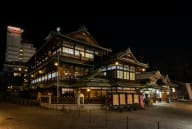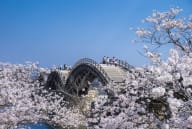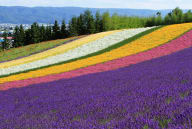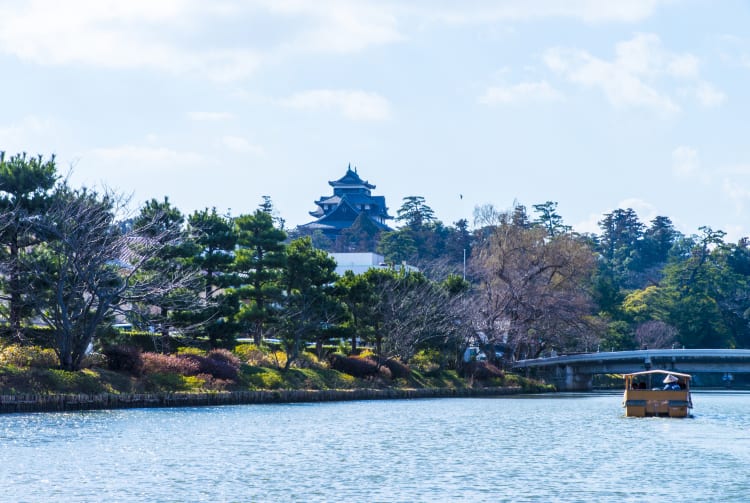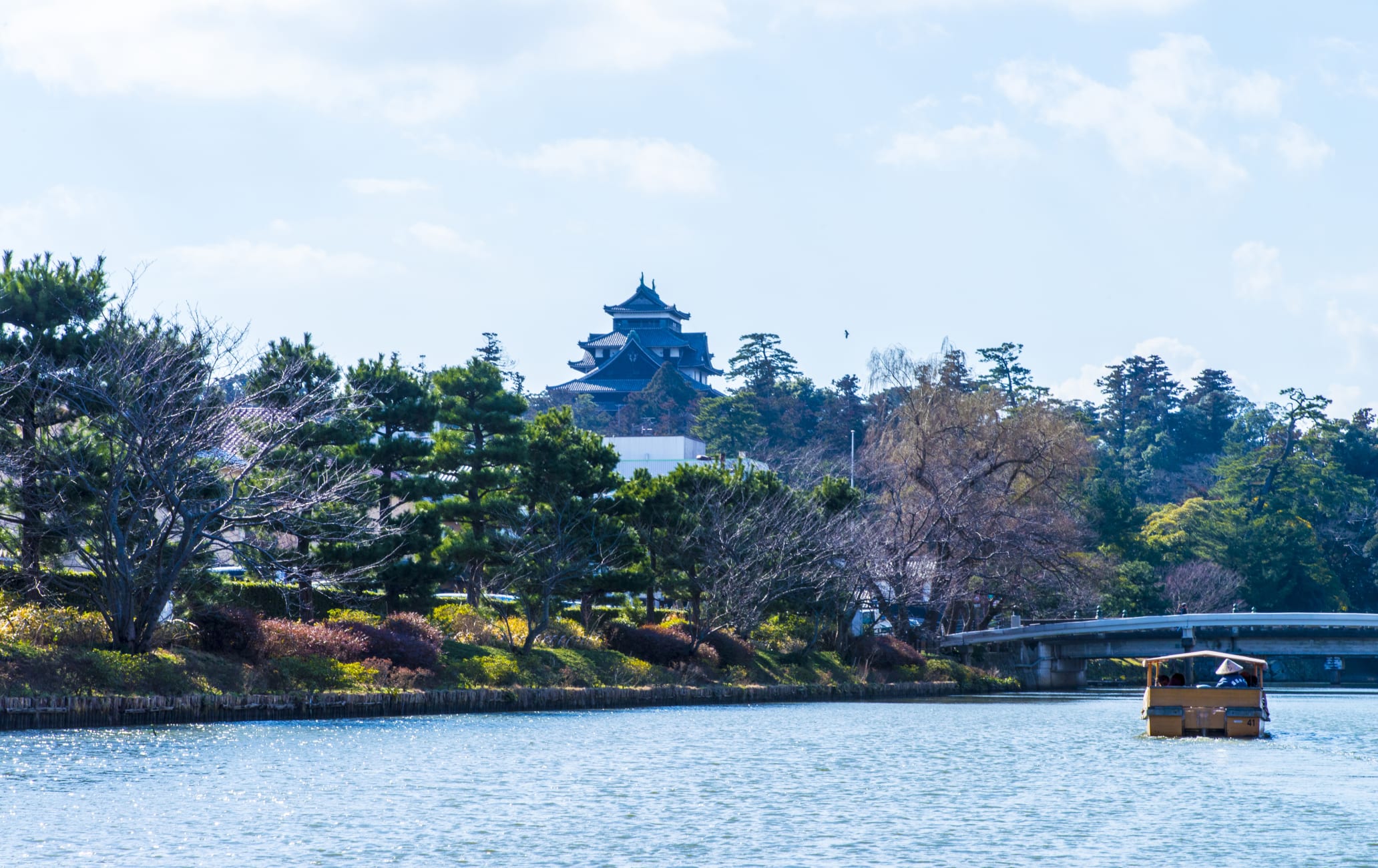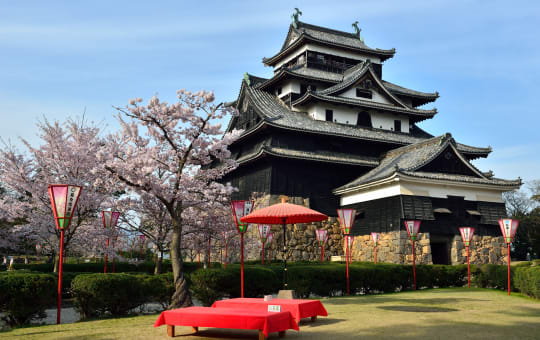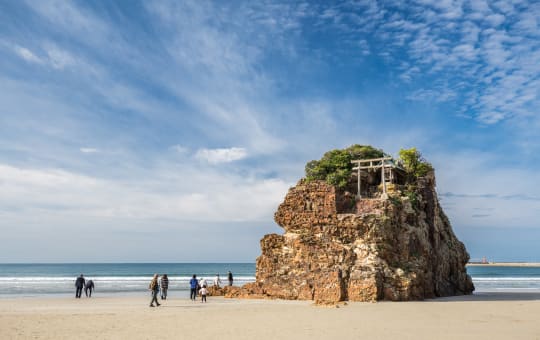Un trésor national et le seul château intact et original de la région
Le château de Matsue est l'un des douze châteaux japonais originaux qui existent encore et l'un des cinq classés comme trésor national. C'est un magnifique témoignage de l'histoire des samouraïs qui n'attend que d'être exploré.
À ne pas manquer
- La vue à 360 degrés depuis le sommet du donjon
- Le sanctuaire de Jozan Inari-jinja, très prisé par l'écrivain Lafcadio Hearn
- Les croisières Horikawa pittoresques
Comment s'y rendre
Le château de Matsue est facilement accessible depuis la gare de Matsue, que vous pouvez rejoindre en train, en bus ou en avion.
Vous pouvez prendre un train à grande vitesse de Tokyo à Okayama, puis un train express JR Yakumo Limited jusqu'à la gare de Matsue. Le trajet total dure environ 6 heures. Le train de nuit Sunrise Izumo au départ de Tokyo est une autre solution agréable. Des bus de nuit sont également disponibles. De nombreux vols depuis Tokyo relient les aéroports à proximité chaque jour.
Le château se situe à seulement deux kilomètres de la gare de Matsue et de nombreux bus en desservent l'entrée. Le bus le plus pratique est le bus Kurutto Matsue Lakeline. Sa carte journalière peu chère vous permet de visiter facilement de nombreux sites touristiques de cette ville fortifiée.
Le château du pluvier
C'est le deuxième plus grand château original encore existant au Japon. Il est également connu sous le nom de château du pluvier en raison de sa forme et de son extérieur noir. Sa construction s'acheva en 1611 lorsqu'il fut décidé d'y déplacer la capitale du domaine.
La famille Matsudaira, descendants directs du shogun Tokugawa Ieyasu (1543-1616), régna sur le château pendant la majeure partie de son histoire. C'est grâce à Matsudaira Harusato (connu comme le seigneur Fumai), le septième seigneur et grand partisan de la cérémonie du thé, que Matsue devint l'un des trois grands centres de l'art du thé.



Lorsque vous explorez les différents étages de l'intérieur du château, en vous promenant sur les planchers en bois foncé et les escaliers polis au cours des siècles, vous découvrirez le seul donjon de château avec un puits à l'intérieur, construit dans un style architectural unique. Vous pouvez observer de près l'architecture complexe de cette forteresse en bois.
Le dernier étage vous offre une vue à 360 degrés sur la ville qui s'est formée autour du château et jusqu'au lac Shinji.
Le parc autour du château
La vaste enceinte du château s'appelle désormais parc Jozan et l'entrée en est gratuite. De nombreux sentiers passent sous les murs de pierre escarpés du château, dans les coteaux boisés et le long des douves. Ce sont des endroits parfaits pour des promenades tranquilles. Le parc est très populaire au printemps pour l'observation des cerisiers en fleurs.
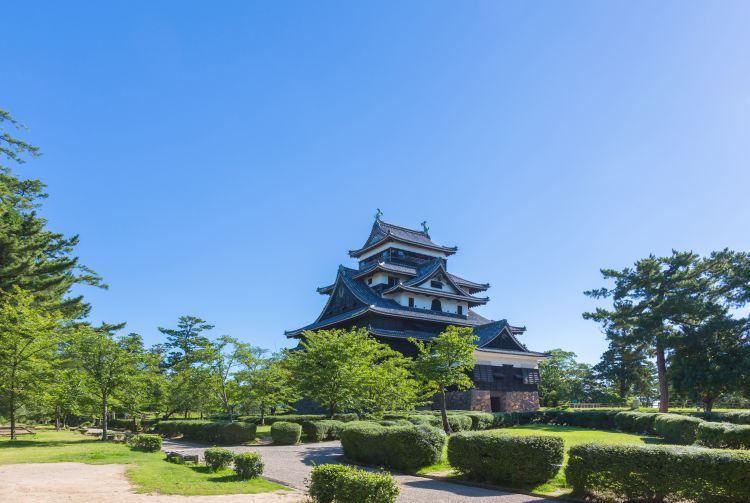
Le parc abrite trois sanctuaires, mais celui qui vaut vraiment le détour se trouve dans un chemin tranquille à l'arrière du château. Le sanctuaire de Jozan Inari-jinja était très prisé par l'écrivain Lafcadio Hearn, dont la maison était à deux pas de l'autre côté des douves. Partez en exploration derrière les bâtiments pour découvrir des centaines de petites statues de kitsune, les messagers renards de la divinité Inari qui y est conservée.
Une chronique d'un événement rare
Le sanctuaire de Jozan Inari-jinja est le point de départ, et de fin, du festival Horan-enya, un événement de trois jours où l'on voit des bateaux décorés remplis de musiciens. C'est l'un des trois festivals de bateaux les plus importants du Japon. Il a lieu une fois tous les 10 ans, le prochain est prévu pour 2029, mais vous pouvez tout apprendre sur ce festival au musée de Horanenya à proximité et regarder des vidéos de cet événement auquel assistent de nombreux visiteurs.
Un manoir construit pour un empereur
Le Kounkaku, un magnifique manoir en bois de style occidental, fait également partie du parc du château. Il fut construit en 1903 pour permettre à l'empereur Meiji de séjourner s'il était de passage à Matsue lors de l'un de ses nombreux voyages à travers le pays. Il n'est jamais venu, mais son fils, le prince héritier Yoshihito, qui devint plus tard l'empereur Taisho, y passa trois jours en 1907.
Le premier étage renferme des expositions sur l'histoire de Matsue, et, au second étage, des chambres élégantes présentent du mobilier d'origine et un décor digne d'un roi.
Faites une croisière tranquille pour découvrir une perspective inhabituelle
Faites une croisière tranquille sur les douves et les canaux environnants après votre visite au château, ou même avant. Vous verrez le château sous tous les angles depuis les petits bateaux, ainsi que le quartier samouraï voisin de la rue Shiomi Nawate .
Vous pouvez embarquer à plusieurs endroits et un audioguide gratuit vous explique l'histoire des différents sites. Les bateaux disposent de toits protégeant les passagers de la pluie et de kotatsu, des tables basses avec chauffage et couverture, pour vous garder au chaud en hiver.
Événements spéciaux
À partir d'octobre le château est illuminé la nuit, et tout au long du mois, des milliers de lanternes en papier bordent les douves et son enceinte. Pendant cette période, les bateaux Horikawa, eux-mêmes illuminés, effectuent des croisières spéciales le soir.
Le troisième dimanche d'octobre, le château accueille un festival de tambour unique. D'énormes tambours taiko d'un diamètre d'environ deux mètres sont transportés dans les rues, et tout le monde, y compris les visiteurs, est invité à venir les battre.
















